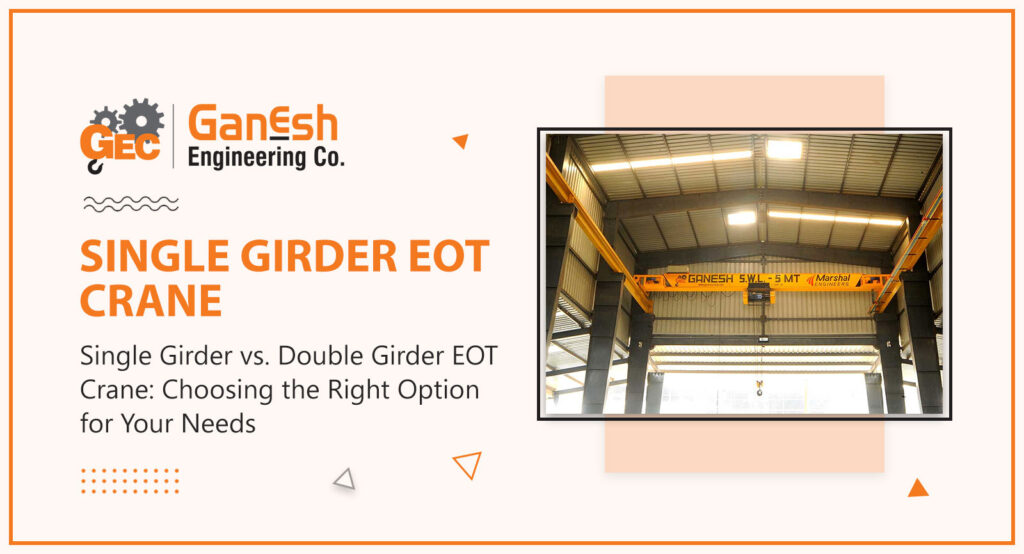
In industries where heavy lifting is a routine task, the choice of the right crane can significantly impact efficiency, safety, and overall productivity. Among the various types of cranes available, Electric Overhead Travel (EOT) cranes are commonly used for lifting and transporting heavy loads within a facility. When it comes to EOT cranes, one crucial decision to make is whether to opt for a Single Girder EOT Crane or a double-girder configuration. Both options have their own set of advantages and applications, and understanding the differences between them is essential for making an informed decision.
Single Girder EOT Crane
A single girder EOT crane consists of one bridge girder supported by end trucks on either side. The hoist and trolley mechanism are typically mounted on the lower flange of the girder, making it a compact and cost-effective solution for light to moderate lifting tasks.
Here are some key features and benefits of single girder EOT cranes:
Cost-effectiveness: Single girder cranes are often less expensive to acquire and install than double girder cranes. They require less material for construction and simpler support structures, resulting in lower overall costs.
Versatility: These cranes are well-suited for facilities with limited headroom, as they require less vertical space for installation. They can also be designed for both indoor and outdoor applications, making them versatile for various industries.
Ease of Maintenance: Because of their simpler construction, single girder cranes require less maintenance than other cranes. Maintenance tasks such as inspection, lubrication, and repairs can be carried out more efficiently, minimizing downtime.
Light to Moderate Lifting Capacity: While single girder cranes are capable of lifting heavy loads, they are typically used for light to moderate lifting tasks. They are ideal for handling loads up to 20 tons in weight.
Double Girder EOT Crane
In contrast, a double girder EOT crane features two bridge girders positioned on either side of the runway beam, with the hoist and trolley mechanism suspended between them. This configuration offers several advantages that make it suitable for heavy-duty lifting operations:
High Lifting Capacity: Double girder cranes are designed to handle heavy loads with ease. The presence of two girders provides increased stability and structural strength, allowing for higher lifting capacities ranging from 5 tons to over 200 tons.
Greater Hook Height: The hoist and trolley mechanism of double girder cranes are suspended between the girders, providing greater hook height compared to single girder cranes. This makes them ideal for applications that require lifting loads to greater heights.
Improved Crane Stability: The dual girder design offers enhanced stability and reduced deflection, especially when lifting heavy or bulky loads. This ensures safer operation and minimizes the risk of accidents or structural damage.
Suitable for Long Span Applications: Double girder cranes are well-suited for applications that require long spans or wide lifting areas. They can be customized to accommodate specific operational requirements, such as loading and unloading materials from ships or warehouses.
Choosing the Right Option
When deciding between single girder and double girder EOT cranes, several factors need to be considered, including the lifting capacity, height requirements, available space, and budget constraints. A single girder crane may be the preferred choice for light to moderate lifting tasks in facilities with limited headroom and budget considerations. However, a double girder crane would be more suitable for heavy-duty applications that demand high lifting capacities, greater hook height, and enhanced stability.
Wrapping Up
Both single girder and double girder EOT cranes offer unique advantages depending on the operation’s specific requirements. By carefully evaluating these requirements and consulting with crane experts, businesses can make an informed decision to select the most appropriate crane configuration that optimizes productivity, safety, and cost-efficiency.

